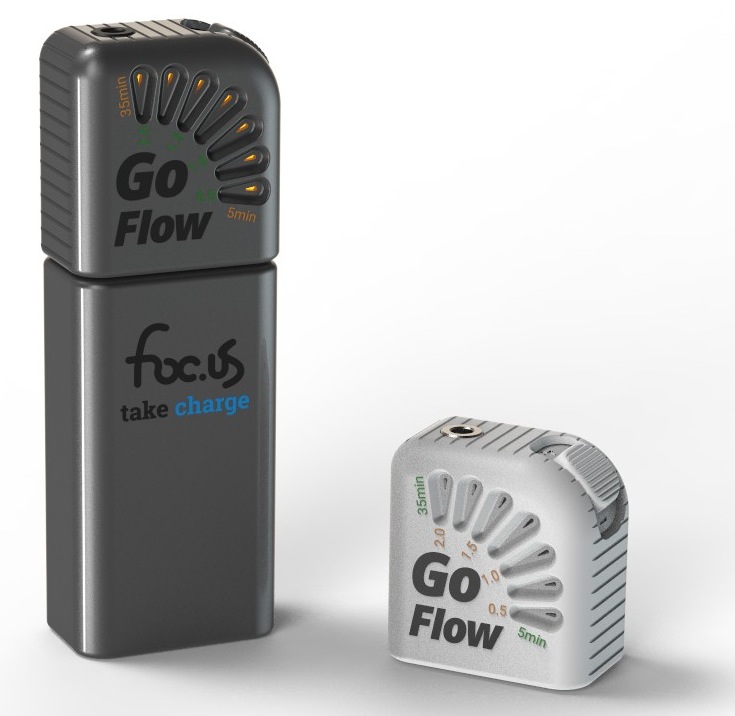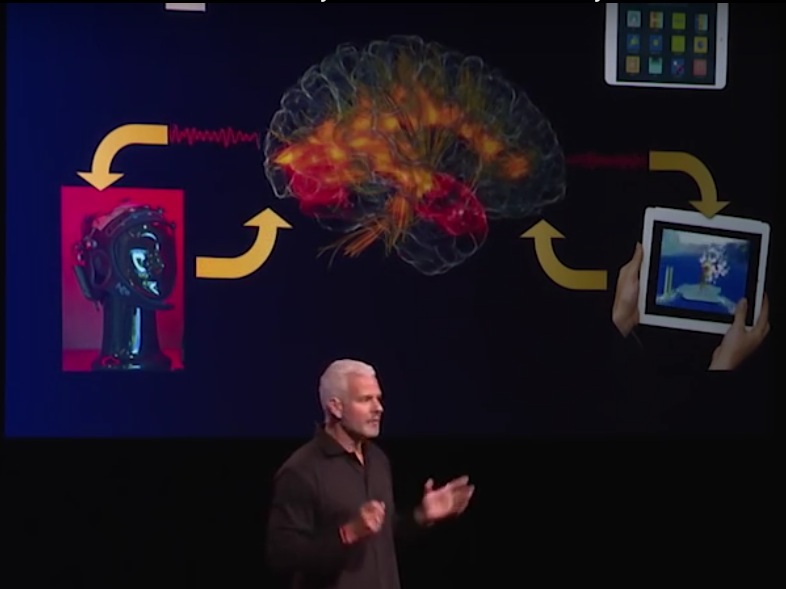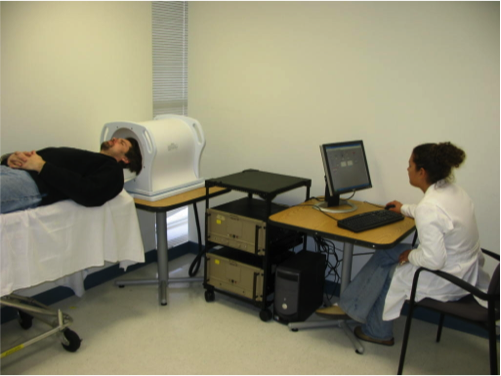Update 2/29/16 Some details of operation I borrowed from the Foc.us rep on the tDCS subReddit.
Yes, you can do any combination of time and current between the minimum and maximum limits.
The current level can be set from 0.5mA to 2mA, and is indicated with ORANGE lights. Pushing up or down the rocker will change the value in 0.25mA steps. e.g. 0.5, 0.75, 1.0, 1.25, 1.5, 1.75, 2mA.
Once the current is set the lights change to GREEN. This is to set the time and pushing the rocker up or down will change in increments of 5 mins e..g. 5, 10, etc.. to a maximum of 35 mins.
Once you press to confirm the time the session will start. There is a slow ramp-up of current at session start for comfort. The gauge will now change from ORANGE to GREEN every 5 seconds.
During an active session the lights will show you the actual current value or approximate time remaining. Using the same Orange for current and green for duration scales.
If you find the current level too low or too high, you can change it during an active session. Simply press the rocker up or down – but please note the current will be ramped for comfort, so wait for each change to take effect. The lights will instantly change to orange to show you your changed level.
Changing current during active sessions is in 0.125mA steps for fine grained control and accuracy. You can see these hard steps by half lit lights. The current level shown on the ORANGE display is the actual, accurate current.
You can click the rocker during an active session to stop and the current will ramp down and off.
“Does it taper down the current over time, or will it be at a constant current over time?” no, this device will not give you incorrect current, neither too low, nor too high. It will be accurate from start to stop. It will not fail just because you have used the wrong amount of salt or your own choice of electrodes or any of the other things that trip up other devices. If for any reason the device detects it cannot maintain the target current, the LEDs will flash green/orange and the session will be stopped.
At focus we believe that the first job of a current stimulator is to produce an accurate safe current. It is staggering that this is considered optional by other manufacturers.
I think you’ll find its a really simple device to use and operate.
If it flashes orange and green – that means the headset is not connected. If it flashes just orange, that means it cannot reach even 0.5mA. This means the resistance somewhere is too high, usually the pads. Please try with fresh pads and problem should be gone.
Update 1/22/16: Part ll of Brent Williams GoFlow review focuses on choosing electrodes.
Update 1/21/16: Brent Williams has just published a review of the GoFlow with how-to details The Brain Hacking Revolution Continues: Introducing the foc.us Go Flow – Part 1
Not shipping until March but now taking pre-orders, Now shipping. Foc.us ‘Go Flow’ tDCS device comes in at under $30 including cables and electrodes (hydrogel only for now). But you can purchase the device itself (and use your own electrodes) for less than $15.
Read the ‘Go Flow’ story here: The Story of Focus Go Flow or order one for yourself here: FOCUS Go Flow tDCS Brain Stimulator



